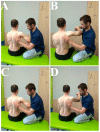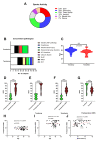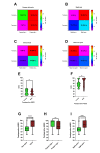Biceps Tenodesis versus Tenotomy with Fast Rehabilitation Protocol-A Functional Perspective in Chronic Tendinopathy
- PMID: 33291804
- PMCID: PMC7762032
- DOI: 10.3390/jcm9123938
Biceps Tenodesis versus Tenotomy with Fast Rehabilitation Protocol-A Functional Perspective in Chronic Tendinopathy
Abstract
The study aimed to evaluate the results after arthroscopic tenodesis and tenotomy of the biceps tendon (LHBT), coupled in tenotomy modality with a personalized postoperative rehabilitation protocol. The study included patients who underwent arthroscopic biceps tenotomy or tenodesis due to chronic biceps tendinopathy. Postoperatively, a standard rehabilitation program was prescribed to the tenodesis group and personalized was introduced in the tenotomy group, respectively. The outcomes were assessed using the American Shoulder and Elbow Surgeons scale (ASES), clinical tests that are dedicated to biceps tendinopathy, the occurrence of a Popeye deformity, night pain, and return to previous sporting activities. A cohort of 67 patients was enrolled in the final follow-up examination (mean 27 months) of which 40 patients underwent tenotomy (60%), and 27 patients (40%) underwent tenodesis. The mean ASES score improved from 48.1 to 87.8 in the tenotomy group and from 44 to 72.7 in the tenodesis group during the follow-up (p < 0.0001). The tenotomy group had better mean postoperative ASES scores than the tenodesis group (p < 0.0001). Positive clinical tests for biceps pathology were noticed more often in patients after LHB tenodesis (p = 0.0541). The Popeye deformity occurred more often in the tenotomy group; however, no patient complained of the visual appearance of the arm contour (p = 0.0128). Moreover, the frequency of night pain decreased in the tenotomy group (p = 0.0059). Return to previous sporting activities was more frequent in the tenotomy group (p = 0.0090). Arthroscopic biceps tenotomy is a reproducible, simple procedure, and augmented by a rapid rehabilitation protocol that provides promising clinical outcomes, reduces shoulder pain, and allows the patient to return to previous sporting activities, even in population older than 50 years.
Keywords: LHBT; arthroscopy; biceps; rehabilitation; shoulder; tendinopathy; tenodesis; tenotomy.
Conflict of interest statement
The authors declare no conflict of interest.
Figures





References
LinkOut - more resources
Full Text Sources

